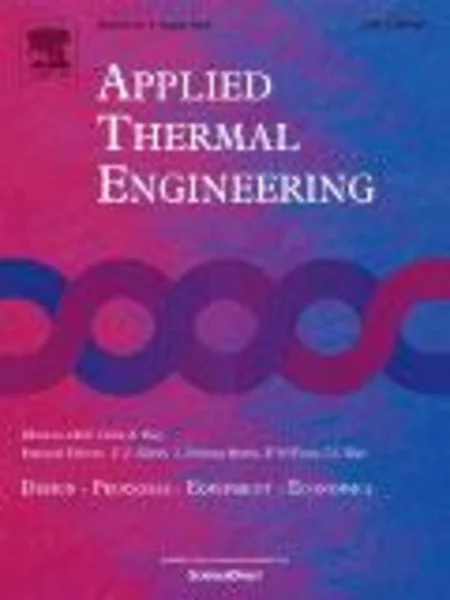-
effect of exhaust confinement and fuel type upon the blowoff limits and fuel switching ability of swirl combustors
جزئیات بیشتر مقاله- تاریخ ارائه: 1392/01/01
- تاریخ انتشار در تی پی بین: 1392/01/01
- تعداد بازدید: 598
- تعداد پرسش و پاسخ ها: 0
- شماره تماس دبیرخانه رویداد: -
effect of exhaust confinement and fuel type upon the blowoff limits and fuel switching ability of swirl combustorsthe use of swirl burners with premixed hydrogen–methane fuel blends is a promising technology for low-emission power generation. utilisation of hydrogen containing fuel mixtures can result in low-emission levels, but it is well known that there are many difficulties, primarily because of the very high laminar and turbulent flame speeds of hydrogen. problems such as blowoff and flashback limits are extremely important where fuel flexibility is required. in this study, a generic swirl combustor at cardiff university's gtrc is utilised to investigate blowoff and the ability of the premixed combustor to switch fuels whilst still maintain the same thermal load, for a range of alternative hydrogen based fuel mixtures in configurations where the confinement is representative of gas turbine practice. this complements previous work on the same generic combustor, where the focus was entirely on flashback limits. ideally to achieve fuel switching or dual fuelling for nominally similar combustor geometries, the operating points for pure hydrogen and natural gas should lie in an operational regime between the blowoff and flashback limits of both fuels. normal concepts of equivalence ratio matching need modification to allow for the varying stoichiometric requirements of different fuel mixtures and the associated differences in their heating values. here heating input from the various fuels as a function of mass flow is used to compare their ability to operate in the same operational, fuel lean regime of the premixed combustor. in practice this is extremely difficult; however, fuel switching/dual fuelling is possible in the swirl burner with certain fuel blends (where the hydrogen content is limited). the results demonstrate and quantify improvements in blowoff limits for hydrogen-enriched methane flames. moreover, for all geometrical configurations considerably improved blowoff characteristics were observed for the confined cases in contrast to the unconfined cases. this data offers a significant insight to burner manufacturers aiming to use swirl combustors with hydrogen-containing alternative fuels.
حوزه های تحت پوشش رویداد
مقالات جدیدترین رویدادها
-
استفاده از تحلیل اهمیت-عملکرد در ارائه الگوی مدیریت خلاقیت سازمانی و ارائه راهکار جهت بهبود
-
بررسی تاثیر ارزش وجوه نقد مازاد بر ساختار سرمایه شرکت های پذیرفته شده در بورس اوراق بهادار تهران
-
بررسی تأثیر سطح افشای ریسک بر قرارداد بدهی شرکت های پذیرفته شده در بورس اوراق بهادار تهران
-
بررسی تأثیر رتبه بندی اعتباری مبتنی بر مدل امتیاز بازار نوظهور بر نقد شوندگی سهام با تأکید بر خصوصی سازی شرکت ها
-
تأثیر آمیخته بازاریابی پوشاک ایرانی بر تصویر ذهنی مشتری پوشاک ایرانی (هاکوپیان)
-
جایگاه سقف های گنبدی در ایجاد محیط آسایش
-
ارزیابی عملکرد سیستم ترکیبی دیاگرید در سازه های بلندمرتبه
-
تبیین مفهوم عملکرد کسب و کار: مطالعه مروری
-
ارزیابی شیر تولیدی در اولین دوره شیردهی گاوهای هلشتاین ایران در استان های مختلف کشور
-
چالش های سلطه ی زبان انگلیسی برای زبان فصیح عربی در عصر جهانی شدن
مقالات جدیدترین ژورنال ها
-
مدیریت و بررسی افسردگی دانش آموزان دختر مقطع متوسطه دوم در دروان کرونا در شهرستان دزفول
-
مدیریت و بررسی خرد سیاسی در اندیشه ی فردوسی در ادب ایران
-
واکاوی و مدیریت توصیفی قلمدان(جاکلیدی)ضریح در موزه آستان قدس رضوی
-
بررسی تاثیر خلاقیت، دانش و انگیزه کارکنان بر پیشنهادات نوآورانه کارکنان ( مورد مطالعه: هتل های 3 و 4 ستاره استان کرمان)
-
بررسی تاثیر کیفیت سیستم های اطلاعاتی بر تصمیم گیری موفق در شرکتهای تولیدی استان اصفهان (مورد مطالعه: مدیران شرکتهای تولیدی استان اصفهان)
-
تبیین و طراحی الگوی پیاده سازی مدیریت دانش در شرکت های تولیدی استان گیلان
-
تأثیر حمل و نقل چند وجهی در افزایش بهره وری و کاهش هزینه حمل کالاها در بندر امام خمینی
-
آموزش دهی و یادگیری (آموزشی محور ها) به عنوان جایگزین های حبس
-
وضعیت حقوقی انتقال اعتبارات اسنادی تجاری و تضمینی؛ مطالعه تطبیقی نظام حقوقی ایران، امریکا و اسناد حقوقی بین المللی
-
بازشناسی تحلیلی نقش مربع در شکل گیری فضاهای معماری ایران در دوره صفویه




سوال خود را در مورد این مقاله مطرح نمایید :